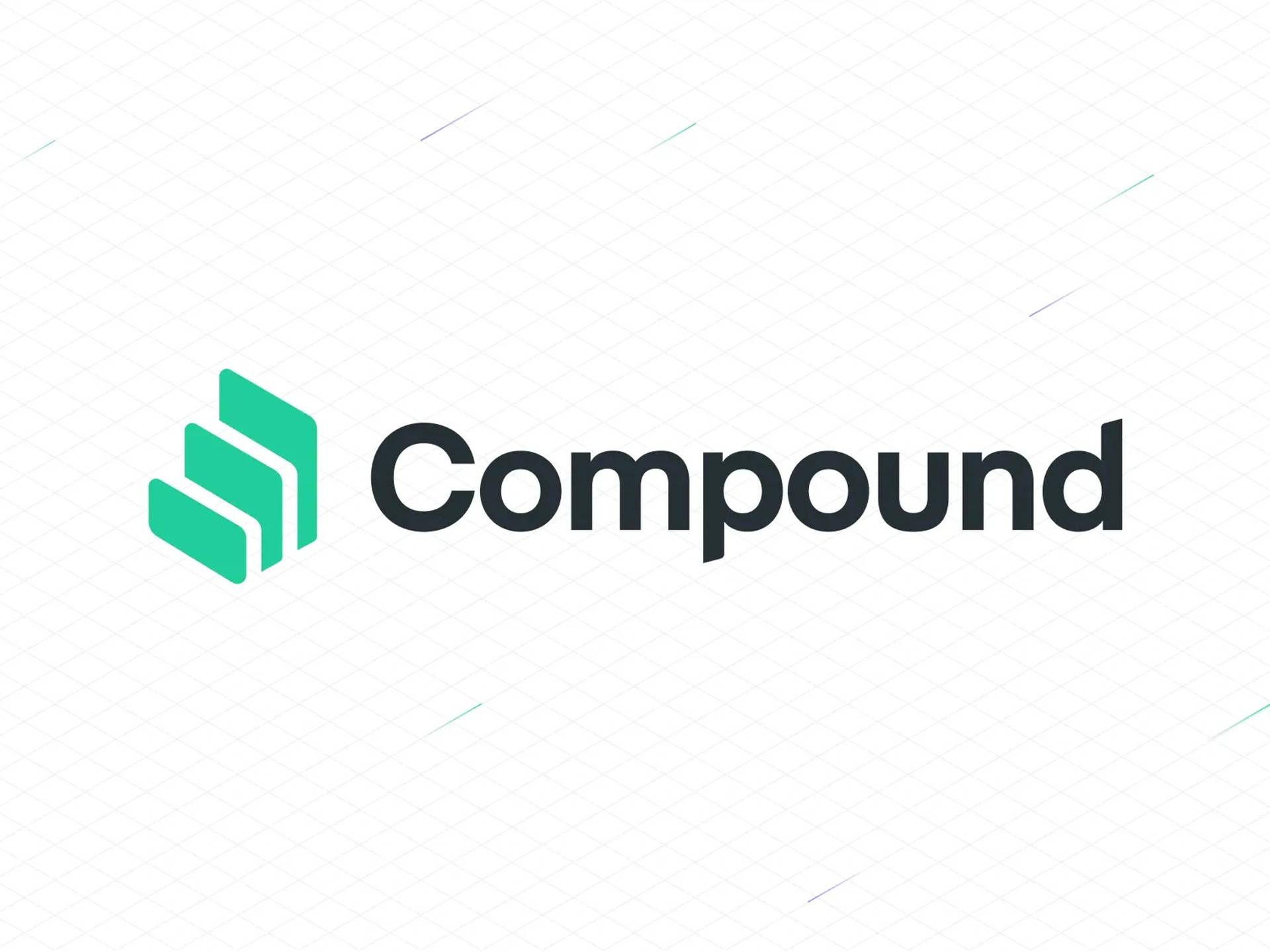订阅 wiki
Share wiki
Bookmark
Compound
Compound
Compound 是一个 DeFi 项目,使用户能够通过 智能合约 锁定其资产来获得贷款或提供贷款。它建立在 以太坊 区块链 上,并由 COMP 代币管理。 [17]
概述
Compound平台的主要用户是贷款人和借款人。贷款人可以将他们的加密货币代币发送到由Compound控制的以太坊地址以赚取利息,而借款人可以以加密货币的形式发布抵押品,以借入支持的加密货币,借款额度为抵押品价值的一定百分比。 [9]
平台上的贷款人可以赚取COMP代币,代币数量取决于他们钱包中持有的cToken数量,这与取决于可用资产供应量的利率成正比。如果市场流动性较高,利率则较低。向协议借出资产的用户可以借出Compound提供的任何其他加密货币的贷款,最高可达他们发布的抵押品金额。 [9]
Compound v2
Compound v2 是一个去中心化的利率协议,旨在为未来的金融市场和应用奠定基础。Compound v2 运行在 以太坊 主网上,提供了一个借贷各种数字资产的系统。该协议支持一系列资产,例如 ETH、0x、Augur、BAT、DAI 和 USDC,使用户能够参与具有可变利率的环境。 [2]
Compound III
Compound III 是一个与 EVM 兼容的协议,允许用户提供加密资产作为抵押品来借入基础资产。账户还可以通过向协议提供基础资产来赚取利息。 [3]
用户的抵押品仍然是他们的财产,受到保护,不会被其他用户提取,除非发生清算。Compound III 的首次部署通过提供 ETH、WBTC、LINK、UNI 或 COMP 作为抵押品,促进了 USDC 的借贷。尽管抵押品不产生利息,但用户可以获得更高的借贷能力,同时最大限度地降低清算风险并减少清算罚款。此外,用户还可以从更低的 gas 费用中受益。 [3]
COMP 治理提案
第一个提案是关于以太坊上的USDC,它为五个抵押资产创建了供应上限,并将Compound Governance控制的500,000 USDC转移到市场作为初始储备。Compound III 由 OpenZeppelin 和 ChainSecurity 审计,并与 Certora 合作进行了正式验证。 [4]
Compound III 引入了一种新模型,其中每次部署都以单一可借资产为特色。用户提供的抵押品仍然是他们的财产,不能被其他用户提取,除非在清算期间。 [5]
Compound Treasury
Compound Treasury与Fireblocks和Circle合作开发了一种产品和资金流动方式,使美国美元的大型持有者(如新兴银行和金融科技初创公司)能够获得Compound协议USDC市场中的利率。[6]
经认可的机构可以选择从Compound Treasury借入美元或USDC,以比特币、以太币和受支持的ERC-20资产作为抵押,固定利率从年利率6%起。借款期限是开放式的,没有强制的还款计划,只要客户保持超额抵押,就可以灵活地提取流动性并自行决定偿还余额。[7]
cToken
cToken是代表用户在Compound中存入资金的ERC-20代币。当用户将ETH或其他ERC-20代币(如USDC)存入协议时,他们会获得等量的cToken。例如,如果用户将USDC锁定在协议中,他们将收到cUSDC代币,这些代币会自动赚取利息。在任何时候,cUSDC都可以兑换成普通的USDC,以及以USDC支付的利息。[10]
cToken最初创建了两种类型:CErc20和CEther。CErc20包装了底层ERC-20资产,而CEther则简单地包装了以太币本身。[10]
Comptroller是Compound协议的风险管理层;它决定了用户需要维持多少抵押品,以及用户可以被清算的程度。每次用户与cToken交互时,都会要求Comptroller批准或拒绝交易。[18]
流动性挖矿
流动性挖矿是指加密货币交易平台激励用户为其流动性池做出贡献的机制。当用户在Compound上存入特定的加密货币时,他们会收到相同货币的cToken版本作为回报。这些cToken可以用作贷款的抵押品,这意味着用户可以在赚取利息的同时消费资金。 [1]
COMP 代币
2020年6月15日,Compound 发布了他们的治理代币,名为 COMP,可供分配。 Compound 开始在 ETH、DAI、USDC、USDT、BAT、REP、WBTC 和 ZRX 市场中分配 1,116,310.81 个 COMP,分配比例与每个市场中产生的利息成正比。 社区于 6 月 14 日通过的提案指出:[11]
"在每个市场中,一半的 COMP 分配给供应商,另一半分配给借款人。 只要地址与 Compound 市场交互,它就会收到该市场中获得的所有 COMP,如果它超过 0.001 COMP 的阈值"
经过一天的交易,COMP 代币成为市值最大的 DeFi 代币,超过了 MakerDAO 的 MKR 代币,涨幅超过 60%。 2020 年 6 月 16 日,Compound 的市值接近 7.4 亿美元。[12]
实用性
Compound 协议通过 COMP 代币奖励其用户,以分配其运营。任何拥有 COMP 代币的人都可以参与影响协议的决策,对管理平台使用的规则提案进行投票。COMP 持有者还可以将其投票权分配给其他人代表他们投票。这意味着,当出现特定问题时,可能会要求非 COMP 持有者代表 COMP 持有者进行投票。 [13]
COMP 分配
当社区治理首次上线时,团队解释了COMP代币的总供应量将如何分配。在总共10,000,000个COMP中,他们保留了775,000个代币“供社区通过其他方式推进治理——这将在未来公布。”在2020年9月,团队解释了这些代币如何分配给社区:[14]
- 6月,团队指定最多500,000个COMP通过Coinbase Earn分发。COMP代币通过Coinbase Earn提供,直到2021年11月,届时Coinbase将所有剩余代币转移到Compound协议的储备合约。
- 9月,他们将剩余的275,000个COMP直接发送到储备合约。
总共有5,004,949个COMP将分配给社区,这超过了总供应量的一半。
在2020年9月,Compound团队发布了自6月开始分发COMP以来所采取的行动清单:
- 创建了15个治理提案;实施了12个
- Dharma.io开发了一种新的利率模型,并部署用于DAI和USDT市场
- Augur团队率先对REP进行了风险管理变更,在升级到REPv2期间
- COMP代币持有者投票将协议的价格预言机更改为开放价格馈送,这是一个开源项目,其中一组报告者签署价格数据,这些数据可以由任何以太坊地址发布在链上 - 并且不依赖于团队
- 社区构建了一个全新的功能,市场级别的借款上限,以限制协议的风险
- 创建了自主提案,允许任何拥有100个COMP的人聚集对治理提案的支持
Coinbase Pro
Coinbase Pro宣布他们将于2020年6月25日上线COMP代币。超过10%的USDC总供应量(由Circle和Coinbase创建的稳定币)被锁定在Compound上。该公告导致Compound的市值飙升至约20亿美元。在公告发布后、上线之前,代币价格达到了371美元的历史新高。 [15]
团队
- Jayson Hobby - 首席执行官[22]
- Geoffrey Hayes - 首席技术官[23]
- Torrey Atcitty - 工程总监[24]
- Jared Flatow - 工程副总裁[25]
- Mykel Pereira - 产品副总裁[26]
- Adam Bavosa - 开发者关系负责人[27]
- Kevin Cheng - 协议负责人[28]
- Josiah Gulden - 设计负责人[29]
- Joseph Lih - 市场总监[30]
- Coburn Berry - 软件工程师[31]
融资
Compound总共进行了四轮融资,总金额达7080万美元。该项目在种子轮融资中筹集了820万美元,主要投资者包括Andreessen Horowitz、Bain Capital Ventures和Polychain。他们筹集了2500万美元的A轮融资,由Andreessen Horowitz领投。他们还从Coinbase的“USDC Bootstrap Fund”获得了100万美元的USDC。2020年进行了一轮风险投资,2022年通过债务融资筹集了总计3760万美元。[8]
X 账户被盗
根据与安全相关的X账户Scam Sniffer和Officer’s Notes的消息,2023年12月29日,Compound Finance的X(前身为Twitter)账户[19]被黑客入侵,并在短时间内变成了一个虚假的钓鱼网站。在被黑期间,该账户发布了一则“免费$COMP代币”的广告,敦促读者点击提供的链接。该链接指向一个看起来与该协议官方网站相同的网站,但被确认为诈骗网站。[20]
2023年12月30日,该账户被团队恢复,垃圾信息已被删除。
“Compound Labs的X账户昨天被盗用约4个小时,直到我们重新控制该账户并删除了垃圾信息。我们已重新完全控制该账户,并感谢社区昨天传播消息,直到我们重新获得访问权限。” - 团队发推文[21]
发现错误了吗?
